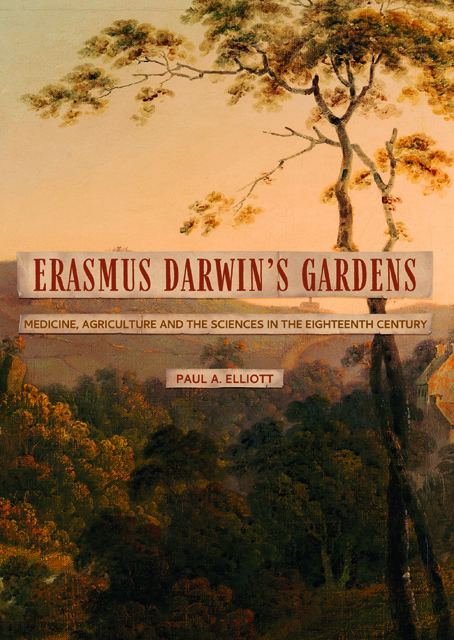Book contents
- Frontmatter
- Contents
- List of Figures
- Acknowledgements
- A Note on Plant Names and Identification
- Introduction
- 1 Lichfield and Derby Gardens
- 2 Medicinal Plants and Their Places
- 3 Agricultural Improvement: Enclosure and the Application of Science and Technology
- 4 Vegetable Physiology, Technology and Agriculture
- 5 Vegetable Pathology and Medicine
- 6 Among the Animals
- 7 Animal Diseases
- 8 ‘Eating of the Tree of Knowledge’: Forestry, Arboriculture and Medicine
- 9 Trees in the Economy Of Nature
- Conclusion
- Select Bibliography
- Index
- Garden and Landscape History
9 - Trees in the Economy Of Nature
Published online by Cambridge University Press: 14 January 2023
- Frontmatter
- Contents
- List of Figures
- Acknowledgements
- A Note on Plant Names and Identification
- Introduction
- 1 Lichfield and Derby Gardens
- 2 Medicinal Plants and Their Places
- 3 Agricultural Improvement: Enclosure and the Application of Science and Technology
- 4 Vegetable Physiology, Technology and Agriculture
- 5 Vegetable Pathology and Medicine
- 6 Among the Animals
- 7 Animal Diseases
- 8 ‘Eating of the Tree of Knowledge’: Forestry, Arboriculture and Medicine
- 9 Trees in the Economy Of Nature
- Conclusion
- Select Bibliography
- Index
- Garden and Landscape History
Summary
Parallels between trees, humans and other animals reinforced Darwin’s progressive Enlightenment belief that improvements in science and medicine would ensure much longer and more comfortable lives virtually free from disease. As a doctor fascinated by similarities between bestial and vegetable bodies, Darwin took a strong interest in tree lifecycles as the most anthropomorphic of plants, inspired by the potential for new remedies and opportunities to apply medical approaches to their study. At the same time, as his pleasure in ‘unchastised nature’ demonstrates, he was also encouraged by – and helped to foster – the new romantic aesthetic of tree representations in art which celebrated individuality and even character and quirkiness, rather than seeing trees merely as undifferentiated ranks in plantations.
Framing other features such as rivers and bold rocky outcrops, trees were often represented within depictions of sublime scenes on increasingly popular tourist itineraries such as the Derwent valley gorge at Matlock, Derbyshire, or the Manifold valley, in the Peak (District). On touring Derbyshire in 1772, William Gilpin (1724–1804) was impressed by the beauty of the dales, particularly the Dove and Derwent valleys, and he described the former as ‘a most romantic and delightful scene, in which the ideas of sublimity and beauty are blended in a high degree’. The striking qualities of Matlock High Tor were enhanced by its silvan decoration and the rich, varied colours and surfaces of the rock. Encouraged by authors such as Gilpin and Uvedale Price, the Picturesque movement celebrated striking and unusual features, including trees of venerable antiquity with gnarled and twisted trunks, which increasingly became objects of fascination in their own right. Artists such as Paul Sandby (1731–1809) and Joseph Wright (1734–1797) made strenuous efforts to move away from stylistic representation and to draw and paint trees in a more naturalistic manner, which shaped Darwin’s depictions of trees in his poetry and natural philosophy. While they removed or moved some trees, landscape gardeners such as Lancelot Brown, William Emes and Humphry Repton brought veteran specimens and old coppice and plantations into their designs and appreciated the differences between tree kinds, positioning outliers and examples seen as special or ‘exotic’ at key points in parks and garden.
- Type
- Chapter
- Information
- Erasmus Darwin's GardensMedicine, Agriculture and the Sciences in the Eighteenth Century, pp. 261 - 290Publisher: Boydell & BrewerPrint publication year: 2021



